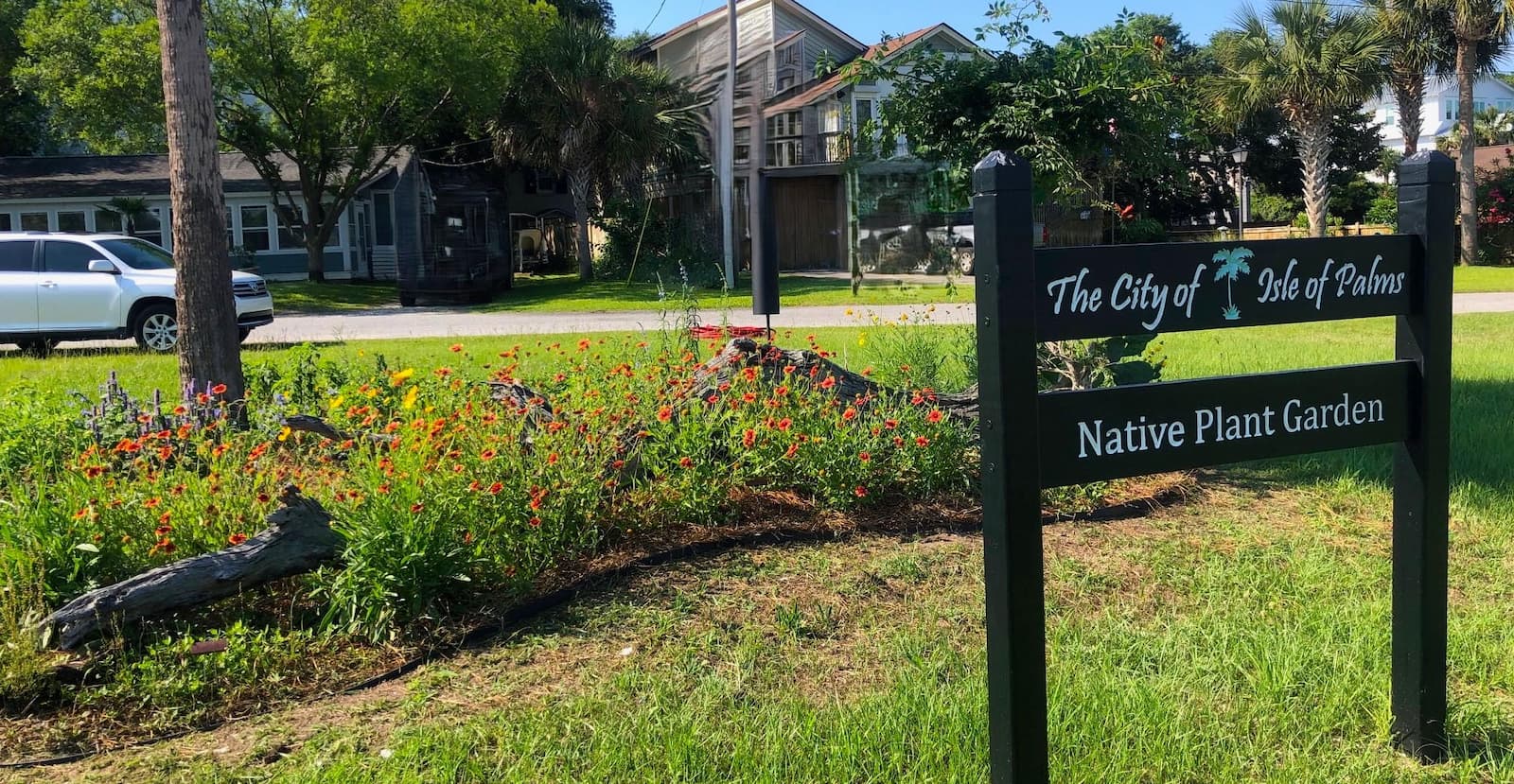The Isle of Palms is filled with lovely plants, trees, shrubs and flowers. Talented landscapers have used their skills to create lush lawns, gardens and ornamental plantings all over the island. They certainly contribute to the beauty of the IOP.
The more we learn about the environment, the more we understand the importance of having local, native plant species around. They’re the ones that existed here long before the area was ever developed.
And as lovely as the new landscaping looks, it’s often brought in from faraway parts of the planet, bringing with it unexpected down-sides - issues like extra care or chemical requirements, cross pollination or even invasiveness that can run amok. Kudzu immediately springs to mind, or the disaster that is the Bradford pear tree.
Why use native plants?
The up-sides of having native plants around are many, like these:
-
They help to host pollinators, which in turn help other forms of wildlife. Native plants are a huge attractor of birds, bees, butterflies, hummingbirds, and other insects, giving them both food (nectar & pollen) and habitat. They, in turn, help support other animals in the local ecosystem, creating healthy biodiversity.
-
They require little to no fertilizer. Just dig in a little organic compost and they’re off to the races. Non-natives, though, need artificial boosts to thrive in our climate. The phosphorus and nitrogen in the fertilizers run off during rains and enter the waterways, causing algae growth and eventual oxygen depletion.
-
They don’t require pesticides. Native plants are hardy, have adapted to local pests, and in fact support healthy insect populations. On the other hand, pesticides contaminate soil and water, harming people, pets and pollinators.
-
Native plants require less water and actually help reduce flooding. They tend to have deep root systems that require little to no extra watering, and also hold and store more floodwater than lawns.
-
Native plants don’t create air pollution. Since they grow freely with no maintenance needed, they don’t require the use of gas-powered lawn equipment, a major source of ozone pollution.
-
And last but not least… they’re really beautiful!
The City & a Committee Get Busy
The City of Isle of Palms along with its Environmental Advisory Committee (and the inimitable IOP gem, Mary Pringle) started hatching a plan to bring a native plant garden to the Isle.
They were able to find a visible, available greenspace… “The Triangle,” the angular piece of land where 7th Avenue comes into Palm Boulevard. While it’s technically owned by the IOP Water & Sewer Commission, planners were able to secure permission to use the space for this important project.
Organizers enlisted the help of native plant expert Sharleen Johnson, who runs Native Plants to the People and has offered educational classes on the subject here on the IOP.
Spades hit the dirt in late February 2024, when they dug up the turf around the palm tree and driftwood in The Triangle, replacing it with compost and pine straw. Then in mid-March, they returned with volunteers to plant several dozen native plants, and put in edging to mark off the new garden. They followed up with watering and weeding to make sure it got a healthy start.
The Result: IOP’s New Native Plant Demonstration Garden
photo credit: Facebook/Native Plants to the People
Their efforts paid off, Mother Nature did her thing, and now the garden is thriving, with about 100 plants in it.
Fun fact: once established, native plants will reseed, spread on their own and don’t require any watering.
There’s an official sign marking the Native Plant Garden, plus a QR code so you can access a key to the plants that are growing there.
To encourage bird activity in the area, they installed a large purple martin house - a sort of white gourd apartment complex, if you will. They’ve also put up bluebird houses. Benches will allow you to watch the birds, butterflies and bees in action.
What’s Growing in the Garden?
Here’s some of what you’ll find in the Native Plant Garden:
-
Blanket Flower (Gaillardia)
-
Dune Sunflower
-
Lance-leaf Coreopsis
-
Turk’s Cap Hibiscus
-
Purple Coneflower (Echinacea)
-
Orange Coneflower
-
Spotted Beebalm
-
Butterfly Milkweed
-
Muhly Grass (Sweetgrass)
-
Spanish Bayonet (Yucca)
-
Spiderwort
-
Prickly Pear Cactus (already growing on site)
-
Trumpet Creeper (already growing on site)
-
Toadflax (already growing on site)
-
Cabbage Palmetto (already growing on site)
-
Lyreleaf & Azure Blue Sages
-
Heath, Smooth Blue & Calico Asters
-
Foxglove Beardtongue
-
Goldenrod
-
Wild Bergamot
-
Common Yarrow
-
Wild White Indigo
-
Dense Blazing Star
-
Frogfuit (groundcover)
-
Blue-eyed Grass (groundcover)
You can find a full list of plants, along with their Latin names and a drawing of where they are located in the garden, on the IOP’s website.
Or better yet – go by and see it yourself. It’s at the corner of Palm Boulevard and 7th Avenue.
All best,
Lowcountry Lisa
your Isle of Palms vacation blogger

